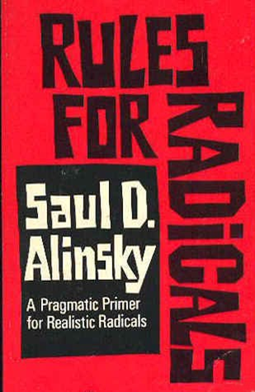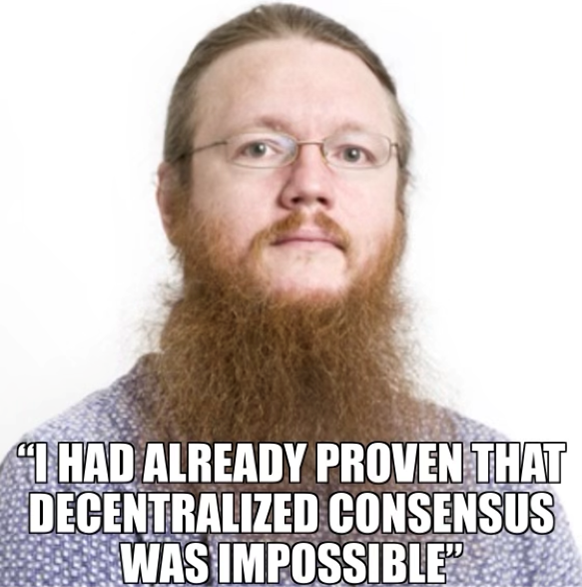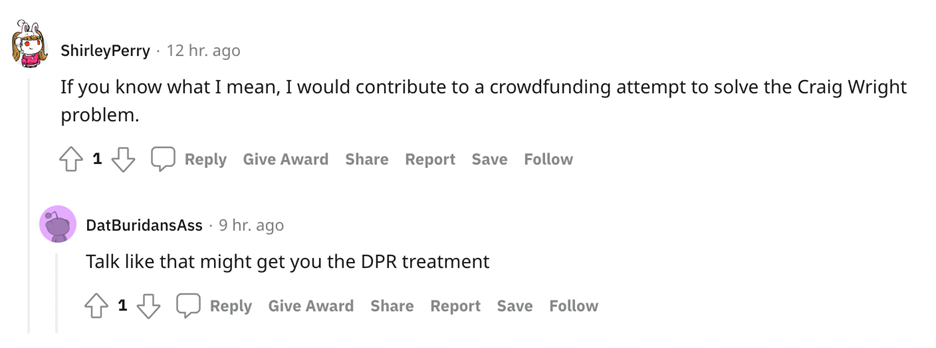Red lasers, Red Revolution and Bitcoin
The Bolshevik Revolution was a revolt against the banks, the state, royalty, the industrial class, entrepreneurship and individualism. The Bolsheviks saw everything as a class struggle where the working class (small blockers would say “the plebeians”) were innately moral while essentially everyone else was evil because of their class. Their worldview assumed that all people were to be presumed malevolent until they were vetted as an ally, and upon confirmation they would typically adopt (typically red) regalia to denote a commitment to the class as a whole and the communist struggle globally. Failure to pass various purity tests and assimilate with the Reds was typically met with execution for being a class traitor.

Over the years, Bolshevik thought split into several strands of anarchism (or “kinglessness”), including Soviet communism, libertarian socialism, anarcho-capitalism, and many others.
In the United States, the next generation of communists created an offshoot often called the “New Left”. This strain of communist thought was much more comfortable publicly joining circles of wealth and power to infiltrate the culture and subvert it. This was largely defined in places like Chicago in the 1960s due to the work of various left-wing groups converging into a cultural revolution in the midst of a great upheaval in American society in general. Libertarian (or more libertine) views of personal behavior were the norm, but radical upheavals against cultural norms and the justification of violence against some of the upper class became the standard.
Essentially, the 1960s became a physical manifestation of the Hegelian dialectic where anyone who resisted was deemed not just wrong but evil, forcing them into new, radical behavior. But the radicalization would never stop because every new leftist thesis would be added to the pressure chamber before being synthesized into the mainstream.
Thus Elvis Presley could be censured for shaking his hips in the 1950s, but open sex and drug use were relatively normal in the 1970s to appease people into allowing major socio-economic changes to be enacted.
Amongst this ilk, Saul Alinsky wrote a primer in 1971 called “Rules for Radicals”, which is a guidebook for effective social(ist) activism from then on – codifying the use of social engineering tactics to constantly push the revolution forward.

This is where the Bitcoin stuff comes in.
Much of de facto Bitcoin culture is an amalgamation of the anti-bank, anti-state activism of the cypherpunks which includes a mixture of anarcho-capitalists and anarcho-communists who always saw cryptography, internet culture and “cryptocurrency” as a way to seek freedom, commit crime and subvert societal norms in varying dosages of each. The Occupy Wall Street movement responding to the 2008 housing crisis and the Tea Party Patriots responding to OWS both used variations on these tactics of cultural upheaval that drove the world into chaos for which Bitcoin became a rallying cry.

Out of this emerged general lawlessness, a “code is law” ethos and a total lack of individualism in Bitcoin, unless you happened to join the big-blocker movement.
Using Alinsky’s lessons, people like Peter Todd, Gregory Maxwell, Samson Mow, and various other small block elitists successfully crushed dissent, free thought, and individualism out of what became the BTC community, and it instituted various purity tests that worked successfully for the Bolsheviks and others. left-wing insurgencies.
The small blocks meant that all nodes should be assumed to be malicious and the industrial mining class could not be trusted, but in the end the UASF member as a class the new proletariat was innately trusted because it passed the purity test: anonymous, able to sync a node, which votes for financial planning in BTC and is militant against Bitcoin companies and “SPAM.”

This transformed into a loss of individuality as the #WeAreAllSatoshi notion replaced any respect for the hierarchy of earned wealth, entrepreneurship and business in general. Small blocking plebs decided that “HODL” and virtue signaling was the only acceptable behavior, but that a culture of revolutionary threats against the mainstream was healthy.
Don’t believe me?
#Bitcoin Maximalism is about principles. And the principles of Bitcoin Maximalism are good
My last for @Forbes
— RIZZO (@pete_rizzo_) 25 August 2022
Remember, it was the Joker’s chaotic anarchism and rowdyism that ushered in Bain’s labor revolution. And that story had much more than a passing reference to Lenin and the Red Revolution.

A story about Greg and Craig
The Red Revolution ended in less than a hundred years with the collapse of the Soviet Union under the weight of its own lack of productivity, but it did not kill communism as a whole. There are still nation-states like North Korea and Cuba that are governed under some Soviet principles, and the ideology still exists around the world in a constant back and forth with neoliberal, neoconservative and various other factions in the dialectic they have created where each move begets a increasing amount of chaos and virtual signals of class struggle.

One of the great struggles is between the small blocs that embody the chaos of permanent revolution (expressed in chaotic governance and soft forks), constant redefinition of concepts, rebellion against classical liberalism or conservatism and a hatred of banks, states and a deep distrust of business . They maintain anon profiles, virtue signals with recognizable regalia (red laser eyes) and repetitive terminology (HODL, have fun staying poor, cope, etc…) while claiming to rule BTC as a collective by threatening miners with a kind of general strike, if their demands are not met.
Next, the major blockchains embrace a fixed protocol, predictability, respect for rules of Bitcoin and the world, as well as adhering to classic definitions for simple terminology. Big blockers tend to use their real identities publicly, focus on business rather than virtue signaling and want to increase the effectiveness of existing systems like banks rather than destroy them.
This is best designed by Gregory Maxwell for the small blocks and Craig Wright for the large blocks.


Gregory is a master software developer with a talent for rhetoric, social engineering, and for leading an intellectual debate against Bitcoin’s original design while keeping it in a permanent state of not-quite-perfect. He has been a significant player in the BTC roadmap, contributing heavily to the code, especially at key pivot points. As one of the founders of Blockstream, he was a significant player in the concept of 2-way attached sidechains, purported “L2” network theory and things like Segwit, Taproot, to be resistant to state censorship.
Craig is the creator of Bitcoin, its license and copyright holder of the white paper. He is the visionary behind the concept of the protocol “set in stone” and Bitcoin’s inherent ability to scale for business use globally. He has advocated its use as a cash system, smart contract platform and property rights enforcement mechanism via its integrations with existing business, laws and regulations – truly neutral protocol for exchange of value and security of rights. He is a classic liberal and believes in the possibility of optimizing the existing systems towards freedom and free markets through his work. His work also includes thousands of patents, proof of unlimited Bitcoin script capable of general computation and the implementation of Bitcoin that he has proven capable of performing millions of transactions per block without any L2 or sidechain crutches.
As Craig represents the values of the old world, Greg represents the threat of permanent revolution, and unfortunately for all of us, Greg went unchallenged in his quest to modify Bitcoin for many years.
Without going into too much detail, a mix of circumstances removed Craig from the Bitcoin project sometime between 2011 and 2012, which is (perhaps strangely) when Greg showed up and started changing things. When Craig returned (2015-2017), there was an uproar as the “WeAreAllSatoshi” ethos was quickly replaced with the possibility that Craig was the Satoshi of the culture – and he was opposed to the anarchism that had permeated the culture.
A civil war consumed the Bitcoin community and the small blocks thought they had won with the BTC ticker, but five years later, Greg has “officially” retired from bitcoin and Blockstream, but he spends an incredible amount of his time writing and thinking on Craig. Other staples of the era have also retired recently: Wladimir Van Der Laan, Peter Todd, Samson Mow and Pieter Wuille … but Craig remains; fighting for his legacy in the economy, in academia and in court. All the while the anarchists are becoming more and more unhinged.
While calling Wright an irrelevant fraud out of one side of his mouth, Greg continues to write long posts about the importance of focusing on crushing his spirit, undermining BSV and some responders even advocating violence.




Greg continues thread after thread lamenting that Craig continues to win victories for law, order and Bitcoin, while long diatribes rule the day from Greg; lamenting such things as “Wright and his conspirators are active lobbying governments, sleazy heads of state” and “Wright’s fraud is an attack on Bitcoin” only because he continues to win victories over his opponents in court and in proof of bitcoin’s inherent ability to scale.
Why does Greg spend so much time theorizing, strategizing, and focusing on Craig Wright?
This is an important indicator, in my opinion.
If you follow Greg across Reddit, it becomes obvious that the frequency and volume of his writing is increasingly focused on BSV and Craig even years after their alleged 2017 victory over Craig and big blockers.
Of course, this would be obvious if you would read Alinsky. And so are the next moves in the game.
Summary
Like many things, we have action and reaction in Bitcoin. Bolshevik thinking has permeated the debate, and it really is a class struggle between two very different value systems. Craig Wright is committed to restoring Bitcoin’s place as a capitalist tool for economic growth, and Gregory Maxwell (and his ilk) seem committed to continuing Bitcoin’s descent into little more than a focal point for value absorption in an ever-degrading world economy.
We are not all Satoshi. We’re not all Hodlonauts. We are all individuals with sovereignty and freedom of action.
Let’s stop the nonsense.
New to Bitcoin? Check out CoinGeeks Bitcoin for beginners section, the ultimate resource guide for learning more about Bitcoin – as originally envisioned by Satoshi Nakamoto – and blockchain.


